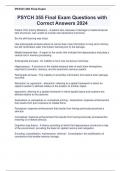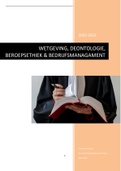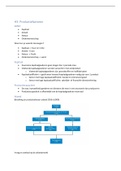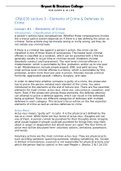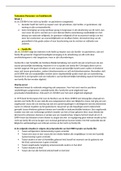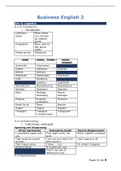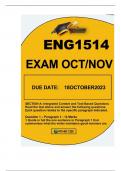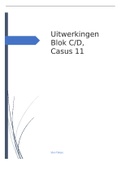Exam (elaborations)
PSYCH 355 Final Exam Questions with Correct Answers 2024
- Course
- PSYCH 355
- Institution
- Athabasca University (AU )
Patient H.M. (Henry Molaison) - A patient who, because of damage to medial temporal lobe structures, was unable to encode new declarative memories. But his skill learning was intact. Has anterograde amnesia where he cannot learn new information in long-term memory but still remembers older in...
[Show more]
